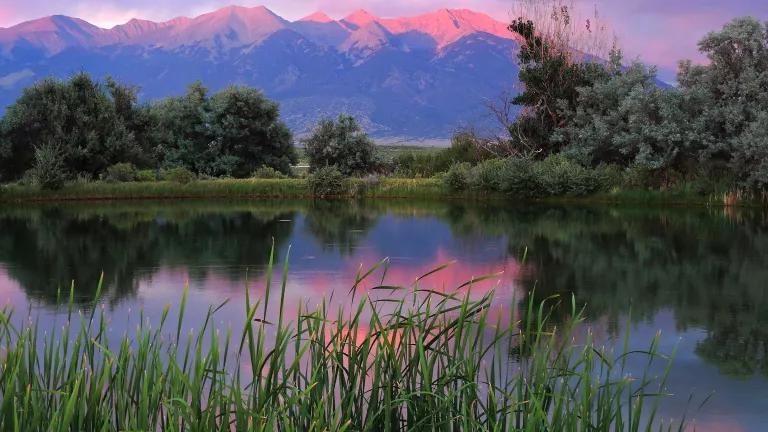2017: Disastrously Costly Extreme Weather

I just attended the 2018 American Meteorological Society Annual Meeting, where the National Oceanic and Atmospheric Administration (NOAA) announced that 2017 shattered all records for the most costly extreme weather year in United States history.
If you thought 2017 seemed like a monstrous year for extreme weather events—from horrible hurricanes, to a seemingly endless western wildfire season, to drought, powerful wind storms, extreme rainfall, and flooding—you were right.
The map below from NOAA shows the geographic spread of the 16 events that each topped $1 billion in damages, and together cost over $306 billion in damage, an all-time high.
Since 1980, when record-keeping began, the country has seen 219 weather-related disasters exceeding $1 billion. Their total costs exceed $1.5 trillion. That’s a lot of money.
Heat-trapping and climate-changing pollution is fueling these kinds of extreme weather events: heat waves, droughts, wildfires, flooding, extreme rainfall, peak wind speeds of hurricanes.
Unless we move toward more efficient, clean energy sources that don’t emit heat-trapping carbon pollution, the frequency of extreme weather events, and the jumbo size of this pricetag, will continue to rise.
NOAA’s $1.5 trillion tally for extreme weather events since 1980 doesn’t include health-related costs—the costs of deaths, injuries, illnesses, and community displacement.
A 2011 study by NRDC and University of California economists looked at the costs of just six climate change-related effects with health consequences—ozone smog pollution, heat waves, hurricanes, mosquito-borne infectious disease, river flooding, and wildfires—in six extreme weather events that happened in the U.S. between 2000 and 2009. The study found estimated costs totaled more than $14 billion from just these six kinds of impact.
That’s the toll from just six extreme weather disasters. Imagine how titanic the health costs were from all 219 of the 1980 to 2017 disasters.
We can help put the brakes this human pain and suffering, and this staggering set of costs, by moving decisively and rapidly toward renewables and energy efficiency, which are our tickets to cleaner, healthier energy sources and healthier, more secure communities. We have the means to make that shift within our reach, and hopefully, to keep the weather disaster list from getting ever-longer and more costly.


.png.jpg?h=5a0ad736&itok=bSbx_JEm)